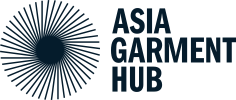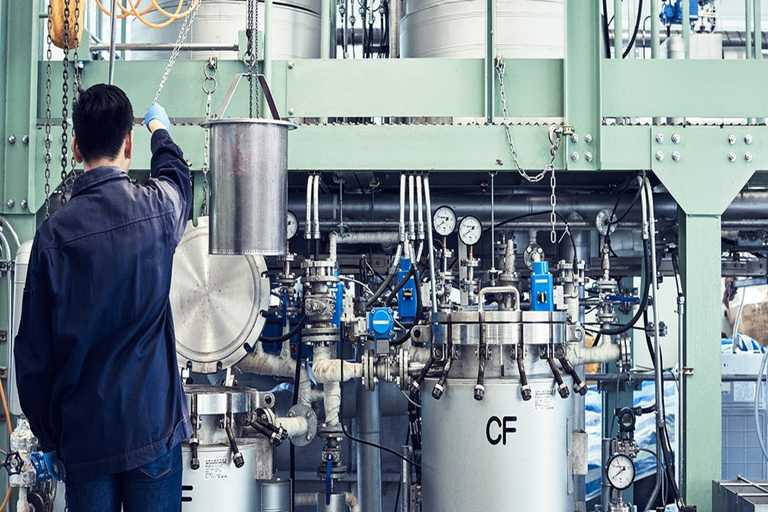“Fostering a recycling industry will definitely put Cambodia on the international map for circularity”
Key players in the textile sector have come together to develop a brand new technology that allows manufacturers to recycle cotton and polyester blends for the first time. We spoke to Massimiliano Tropeano, FABRIC Asia, Senior Advisor for Garment Sector, about the importance of a better waste management and what solutions are available.
An estimated 10-15% of the total fabric used to produce garments currently becomes waste already at the cutting stage. Today, most of it ends up in landfill or is burnt.
For this reason, Deutsche Gesellschaft für Internationale Zusammenarbeit (GIZ) GmbH through its FABRIC project, which is implemented on behalf of the German Ministry for Economic Cooperation and Development (BMZ) brought together key partners along the garment supply chain (The Hong Kong Research Institute of Textiles and Apparel Limited (HKRITA), Chip Mong Insee, Dakota Industrial, H&M Foundation and VF Corporation) to assess the industrial scale development of the Green Machine in Cambodia.
Even though recycling of individual materials has been possible for a long time, this is not the case with blends - whereby cotton and polyester blends are among the most frequently used textiles worldwide. The Green Machine is the world’s first recycling technology that can separate and recycle polyester/cotton blend textiles at scale without any quality loss. The process uses only heat, water and less than 15% of a biodegradable chemical to separate cotton and polyester materials in a closed loop system. GIZ FABRIC will support a feasibility study of The Green Machine in Cambodia so that the private partners could take an informed decision to deploy this cutting-edge technology to start waste recycling in Cambodia for the first time ever, by 2022.
How did the collaboration on the establishment of a pilot plant (The Green Machine) for textile waste recycling in Cambodia come about?
FABRIC is always looking for innovative and interesting ways to involve the private sector in the garment industry. At the same time, circularity is becoming more of a concrete topic within our project, so the important topic of recycling was chosen. We decided to approach the issue from a post-industrial perspective rather than a post-consumer perspective, as FABRIC's focus is on the factories and sourcing team of different brands.
What can a better waste management in Southeast Asia achieve?
Wastage is estimated to be 10-20% of the total fabric used to produce a garment, depending on style, fabric and a number of other variables. A quick and simple calculation results in huge amounts of fabric waste ending up in landfill, while only 1% is estimated to be recycled. Our research on this topic (read more HERE) showed that 60% of the industrial waste of Cambodia is made of textile waste.
What are the biggest negative impacts on the environment in the manufacturing stages?
FABRIC is actively working on the most sensitive environmental issues throughout the supply chain from level 3 to level 0, such as the use of chemicals and standards in yarn weaving and washing plants, the reduction of waste water and consumption throughout the chain in all five countries where we work, etc.; Fabric waste is one of the latest issues.
And what additional problems arise when production is outsourced to countries where environmental standards are lacking or ignored?
The poorer the country the most challenging it becomes. The push for development of manufacturing activities is often so strong that environmental standards are forgotten or not implemented. Working together with environmental authorities and institutions is the key.
The implementation in Cambodia of a fabric waste recycle pilot unit (FWRP) uses the technology of the hydrothermal separation system. Can you briefly outline this technology? What are the advantages of this technology?
It is a new technology developed by Hkrita. The challenge is to bring this technology to an industrial level that is relevant enough to make the difference. This hydrothermal separation system is mainly targeting polyester and cotton/polyester blends. We see our role, the GIZ FABRIC team, as a coordinator between the different actors in the supply chain. We will promote the application of this green technology by funding a full feasibility study in the Kingdom of Cambodia. The initiative carefully involves potential investors along the supply chain (Chip Mong Insee), brand and retailers (VF Corporation), foundations (H&M Foundation) and manufacturers (Dakota), in addition to the research institute (Hkrita). All together for a common goal.
What do you hope to achieve with the Green Machine?
The feasibility study organised by GIZ is targeting a key country of garment manufacturing: Cambodia. The ultimate goal of this activity would be the first large-scale fabric recycling plant in this country, collecting most of the fabric wastage produced by manufacturers. Fostering a recycling industry here will definitely put Cambodia on the international map for circularity, considerably reducing the waste of the landfill dump.
Can this project serve as a model for other countries?
Over the years, polyester has become increasingly important in terms of production and available qualities. Currently, over 50% of all fabric production is made from polyester. This technology targets exactly this portion together with the cotton-polyester blends, which would mean that over 70% of the total fabric production worldwide could potentially be recycled. A large-scale recycling activity for fabric waste could give a new life to this post-industrial element, giving it value and thus transforming the waste into a product in its own right, providing a source of revenue for the actors involved, from factories to consumers, through the logistics chain, spinning mills and so on.

